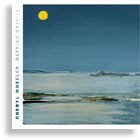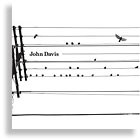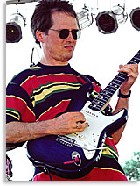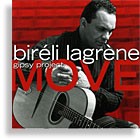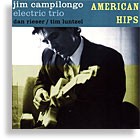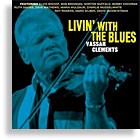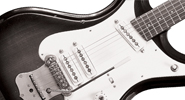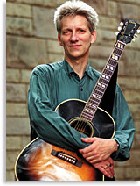Television always seemed to be from another planet.
Alien-like, the band was an anomaly: a dichotomy of punk attitude and intellectual musicianship. To put it another way, they hated hippies, but liked guitar solos.
“Television would be out of place anywhere,” co-guitarist Richard Lloyd said regarding the mid-’70s New York City punk/new wave scene the band grew from.
His comment neatly sums up some fans’ fascination with Television. Here was a band tired of the fuzzed-up pentatonic guitar style that dominated rock music of the late ’60s and early ’70s and the flower-power sentiments that went along with it (“…anti-Marshall and anti-hippy longhair,” as Lloyd says). But instead of bashing out three-chord “punk” songs, Television wrote demanding arrangements, employed extended solos, and improvised – all of which frequently got it compared to the Grateful Dead. Talk about irony.
The band’s 1977 debut album, Marquee Moon, routinely lands on critics’ “Best Rock Albums” lists, and although it originally sold about 23 copies, in a scenario reminiscent of the Velvet Underground – a band Television took cues from – most everyone who bought it formed a band (admirers include R.E.M., Sonic Youth and U2’s The Edge.)
Many attributes made Television striking and strikingly original, from guitarist/vocalist Tom Verlaine’s cerebral lyrics and warble of a voice, to the truly impeccable rhythm section of bassist Fred Smith and drummer Billy Ficca, to the band’s minimal approach to gear and the studio. Yet it’s always been the kinetic dual guitar interplay of Verlaine and Lloyd that lit ears and imaginations afire.
Television ground to a halt after only two albums. A brief reunion and third album followed in ’92. The new millennium, however, finds a reformed, reinvigorated Television that made appearances at numerous festivals in Europe and Japan through 2001 and ’02, in addition to select U.S. dates last summer.
We recently conversed with Lloyd, and had hoped to also interview Verlaine. But Lloyd informed that his reclusive partner no longer speaks to the press.
Vintage Guitar: What’s your early musical background?
Richard Lloyd: I was born in Pittsburgh. I had a little piano that I used to play when I was three or four, but nobody in my family knew how to play or teach me, so eventually I got frustrated.
When did you start playing guitar, and who were your influences?
I had some cousins who got guitars and who showed me three chords one night, and I took the guitar into the bathroom when everyone else went to sleep and the next thing I knew it was the morning and I had been playing these three chords all night without even realizing it.
Later, I borrowed my stepfather’s ukulele and played with a quarter because I didn’t like the felt pick it came with. But he really flipped out when he caught me doing that, so I had to sneak it out of the closet again at night.
When I was a teenager, I got a set of drums and played them for a couple years, and even took lessons. One day while I was playing the drums, all the color sort of faded out of them, and an inner voice said, “You need to play a melody instrument.” This was when I switched to electric guitar, and shortly thereafter I met and became best friends with Velvert Turner, who was a guitar student and friend of Jimi Hendrix. Velvert used to challenge me to play the things Jimi was teaching him. I learned a lot that way.
Were you in any bands before Televsion?
No, Television was my first band.
How did you come to join?
I was roommates in New York City with a guy named Terry Ork. He had a big loft in Chinatown and he wanted to sponsor a band because he worked for Andy Warhol, and Andy did that with the Velvet Underground. One day he told me that someone he knew “…did what I did.” I asked him what he meant, and he said, “Play electric guitar alone,” and so did this other guy named Tom (Verlaine). We went to see Tom perform three songs and I told Terry that if he put the two of us together he would have the band he was looking for. Terry spoke to Tom and his friend Richard Meyers (a.k.a. Richard Hell) and they came to visit me – and give me the once-over. That was in October, 1974. We started rehearsing a couple of weeks later.
Television recorded a demo with Brian Eno for Island Records in the mid ’70s. What’s the story behind that?
Richard Williams worked for Island and was interested in the band. He brought in Eno as a producer/consultant, but the results sucked and we rejected Island’s offer.
How did Television typically go about writing songs? How did you and Verlaine work out guitar parts?
Some of the songs had been written by Tom already. For some of those he already had two guitar parts and he would simply show me the one he wanted me to play. For other songs, I could either make up my own part, or we developed my parts together. He was always the bandleader and musical director.
Television gets lumped into the ’70s punk/new wave category, yet many of those bands featured musicians who weren’t nearly as proficient, and your and Verlaine’s adventurous guitar approach would seem to run counter to the punk ethos. Did Television ever feel out of place?
Television would be out of place anywhere. Ahmet Ertegun didn’t want to sign us to Atlantic Records because he claimed we didn’t play “Earth music.” I think he was right.
What about the infamous comparisons of Television to the Grateful Dead? Do you think that was/is valid?
Seymour Stein first made that remark to me in a meeting I had with him when he wanted to sign Television to Sire Records. He said that we would never sell a lot of records right away but if we signed with him he would develop us like the Grateful Dead so that we would develop a rabid following and sell records for the next 50 years. I think he was also correct, but we didn’t need him to achieve that.
What was it like being a part of New York City punk scene of the ’70s?
I liked being part of it. It was like having your own private bar and four-year-long party, where you were one of the hosts.
Did you ever think it would be as important or influential as it turned out to be?
Yes, I thought it would be an important time in the history of rock and roll. Of course, the further away it gets, the bigger it seems in the backward telescope that people use to view the past.
Whose idea was it to list guitar solo credits in the Marquee Moon liner notes? You did the same on the ’92 reunion album.
Tom and I both thought it was a good idea because were always getting each other’s complements. It didn’t work, because people still don’t know who played what in Television. I still get approached by people who credit me for stuff that Tom does and credit Tom for stuff that I do. I’ve given up trying to correct them.
How did Robert Mapplethorpe come to take photos for the Marquee Moon cover?
Tom was friends with Patti Smith, and Patti was friends with Robert. Since Robert was one of the great living photographers, it was an easy choice. Tom thought of it and I thought it was absolutely wonderful that he agreed to do it.
What are your recollections of recording that album?
I have fantastic memories of the old A&R studios on 48th Street in New York. Too many to recollect, but I thought that working with Andy Johns was a hoot. On one of my solos (“Elevation”), which is double-tracked, we wanted to use a Leslie speaker for one of them but it was too expensive to rent and too heavy to drag around, so Andy swung around a microphone like a lasso during the take. As he certainly liked his wine at the time, it’s a wonder he didn’t knock out my teeth with it.
The second album, Adventure, has less of a frantic feel. Was that a reflection of the songs, did it represent the overall mood of the band, or did it have more to do with production, studio, etc.?
I would say the second.
How did the end come about? Had the band readied any material for a third album?
There was very little additional new material at the end. The band members just decided to take a hiatus.
What was the impetus for the 1992 reunion album and tour?
My manager and Tom’s manager at the time started talking and asked if we would like to resume. Fred and Billy were contacted and we all agreed to get together and play. When we did, it was clear that the band hadn’t lost its ability to interact musically, so we decided to make another record. Pretty simple.
What are your feelings about the first reunion? Were expectations met? A few years following, you seemed a bit disappointed.
The record company had a huge restructuring right after we signed, and the company did very poorly with the record, which we thought was a shame. But that’s life.
How did the recent string of reunion shows develop?
Television’s manager contacted us about some festivals in Europe that wanted us to play. We like festivals, so we agreed to do them. All the other shows followed on that.
Are the big festival shows enjoyable, from a musical standpoint?
Probably as much as ever. At times I’ve felt the band is coming to the height of its powers.
Were any of the recent reunion shows officially recorded?
We record as many live shows as possible, and we’re talking about a live release.
How did you come to work with Matthew Sweet? You really brought a nice edge to his material.
I like Matthew a lot, and enjoy his work. We met in the Golden Palominos and became good friends. Most recently in Los Angeles, I played on another Matthew record that was released only in Japan.
You returned to solo recording with The Cover Doesn’t Matter in 2001. Why such a long wait?
It’s a long wait because I have other interests besides music. I’m a hermit and like to spend years sitting cross-legged in a cave!
You made an interesting comment in the liner notes: “I wished to make a record that had a sonic quality such that it might have been recorded in 1968, but with no hint of nostalgia, timelessness.” Can you expound on that?
Well, in the ’50s, jazz musicians used to write their own liner notes describing their inner state and aims. It was like that. In some ways I hit the mark, and in others absolutely not. But having a mission statement makes it easy to see where the target is.
What were your first guitar and amp?
A Fender Stratocaster and an Ampeg B-15 turned up to 10. And I played almost exclusively feedback with the tremolo bar.
What drew you to the Strat?
Two things. One, Jimi Hendrix. Two, it was the first electric guitar I owned because a friend of mine sold it to me cheap. I like its radius and it has a different “squeeze” than a Gibson… or anything else, for that matter.
What gear did you use in Television in the ’70s? Judging from photos, there were plenty of old Fender guitars, Fender amps, and few effects. Was it a conscious decision to use that gear, or was it simply a matter of economics/availability, etc.?
Yes. Fender guitars and blackface Supers. No effects. Conscious decision. Anti-Marshall and anti-hippy longhair!
Can you give details on your current rig?
Mostly, I’ve been playing through a Vox AC-30 live and a blackface Fender Deluxe. The AC-30 is from about 1980, and the Deluxe is a ’65. I use the same thing with Television. I’ve been using a TS-808 Tube Screamer and a Boss SD-1 for years.
Your website is a real treasure trove for guitarists, with the lessons and chord machine feature being particularly valuable. What prompted you to share your knowledge?
I feel I’m in debt, and if I don’t pay that debt in this lifetime, I’ll be in trouble. For me, being in this life is like a remedial course. Too many people are greedy. My karma cannot afford any more weight. If I give something, then some of the weight comes off.
How did you come to be so knowledgeable about the guitar? The content on your site dealing with musical theory is indicative of lots of time spent studying the instrument.
Yoga. Alchemy. Hermeticism. Magic. I have a saying, which is posted somewhere on my website: “They have never found a limit to the storage capacity of the human brain.” Nothing you’ve ever learned, or will learn, requires that you unlearn or dump any other knowledge.
Also, I believe you can learn how to learn. If you learn how to learn, then any area upon which you focus this technique will yield its secrets. A man who knows anything fully – and knows that he knows fully – can know anything.
Would you say you have a decidedly philosophical approach to playing the guitar?
I have a decidedly philosophical approach to studying. I’m not sure if I have a philosophical approach to playing. I think of playing in front of people as being a form of circus acrobatics. You go to the circus to see people who might fall or get eaten by the tiger. The thrill is in the danger.
You’ve given guitar lessons in the past. What was the teaching experience like for you?
One of the things that I like the most about teaching is that it requires that I myself continue to study. It’s like having little policemen who pay me to not get lazy.
Do you still teach guitar? Are you accepting new students?
Yes, if they live in the New York City area they can contact me by e-mail at richard@richardlloyd.com.
Discogrophy
Television
Marquee Moon (1977)
Adventure (1978)
The Blow-Up (1982; reissued on CD in 1992 and 1999)
Television (1992)
Richard Lloyd
Alchemy (1980)
Field of Fire (1986)
Real Time (1987)
The Cover Doesn’t Matter (2001)
Richard Lloyd and Television on the web…
www.richardlloyd.com. Richard Lloyd’s informative homepage; includes an in-depth lessons section, a Q&A forum where Lloyd publishes responses to fan emails, and a handy guitar chord machine.
www.marquee.demon.co.uk/. “The Wonder – Tom Verlaine, Television and Stuff.” Features tons of info, including recent news and photos from the band’s 2002 shows in London and New York, an extensive family tree section, links to recent articles and an impressive photo collection.
www.geocities.com/SiliconValley/Horizon/7784/. “Santadog’s Television, Tom Verlaine, and Richard Lloyd Page.” Lots of cool images (photos, old show posters), great archive, and nice links section.
mindspring.com/~serovner/Justthefacts.htm. “Just the Facts – An Unofficial Television and Members Information Source.” Info on Verlaine, Lloyd and original Television bassist Richard Hell. Includes link to Subterranean Records, the long-running NYC record shop that carries Television rarities.
Photos: Ken Settle.
This article originally appeared in VG‘s May ’03 issue. All copyrights are by the author and Vintage Guitar magazine. Unauthorized replication or use is strictly prohibited.
